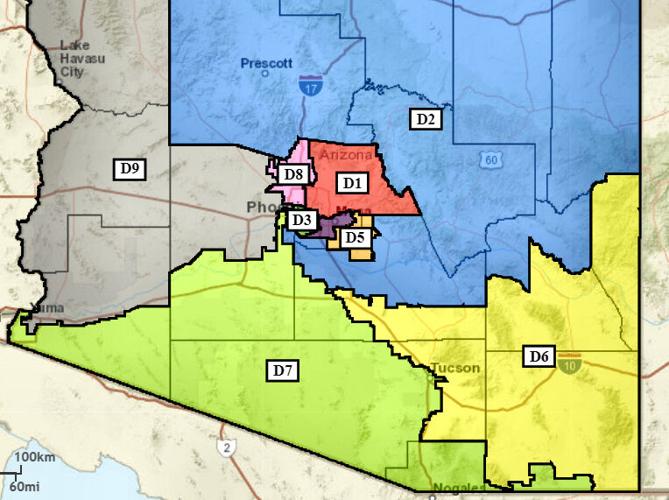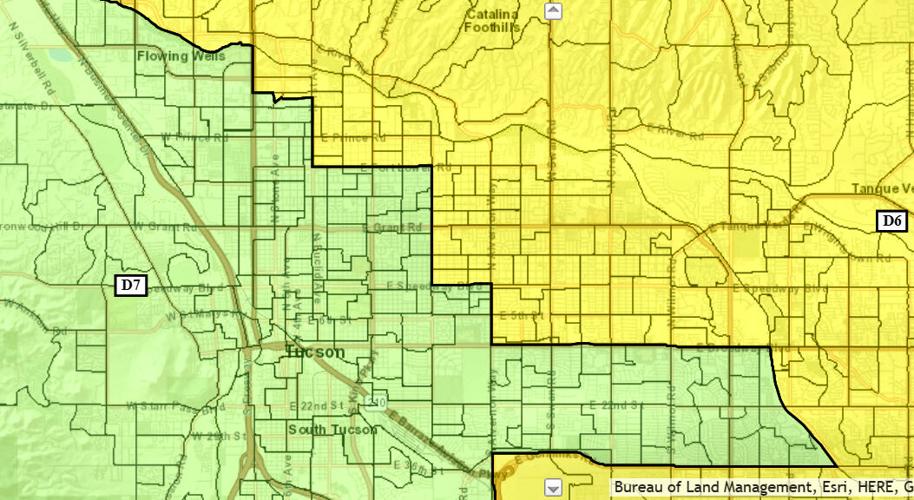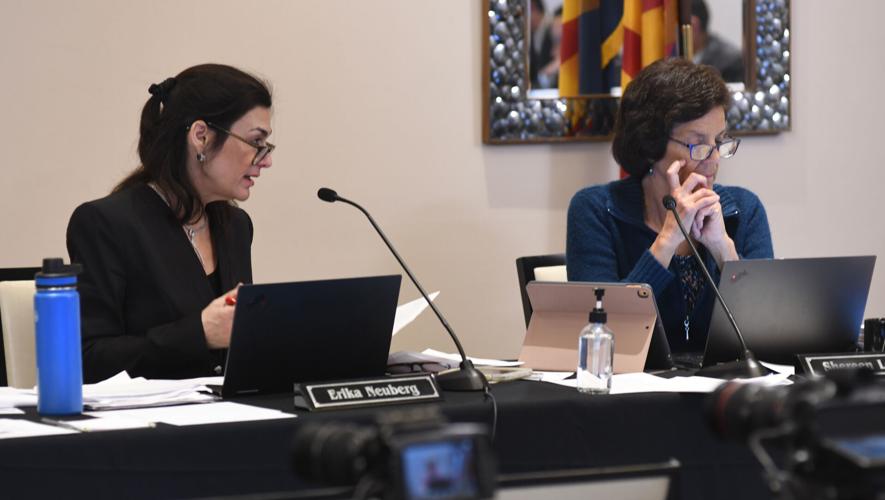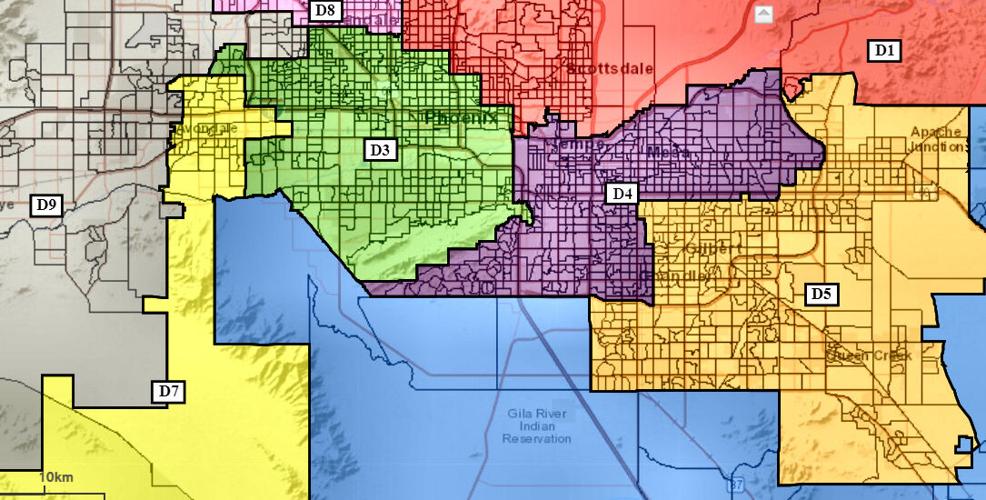PHOENIX — Republicans would have four "safe'' congressional seats under a plan ready for a final vote Wednesday, Dec. 22, by the Independent Redistricting Commission.
After days of debate, the five-member panel appears settled on a plan that, based on voter registrations, also would pretty much guarantee that Democrats would be able to elect whomever they nominate in three districts from now until 2030.
That calculation using registration figures then would leave two seats up for grabs: Congressional District 1, which will include northeast Phoenix, Scottsdale and Fountain Hills; and CD6, which will run from midtown Tucson as far north as Casa Grande and then east into Graham and Greenlee counties and most of Cochise County.
It was that district that proved to be the most difficult on which to get consensus.
Republicans sought to modify initial maps to craft a district that would give Republicans an edge. They did that, according to Democrat Shereen Lerner, by having a dividing line run through Tucson in a way to move many members of her party out and into CD7, a district that already has a 2-1 Democratic edge.
"The changes you made were purely partisan in nature,'' she said.
"We had a map that was going to both meet communities of interest, meet geographic boundaries, do all of the things that we are supposed to constitutionally do,'' Lerner continued. "When you made those changes in Tucson it was specifically packing (Congressional) District 7 with white, liberal voters and taking them out of District 6.''
But as of late Tuesday, Lerner and fellow Democrat Derrick Watchman appeared ready to support a version that included a series of tweaks to that line.
That moved individual neighborhoods back and forth to a point where the Republican voter registration edge in CD6 was only about 1.5 percentage points. Erika Neuberg, the political independent who chairs the panel, said she is satisfied that this creates an opportunity for a candidate from either party to win office.
Lerner, however, remained unhappy, saying voter registration is only one indicator. She noted that an analysis of how residents of what would be CD6 voted in nine prior elections in 2018 and 2020 found that Republicans won six of those.
And even that, Lerner said, is misleading.
Of the three that were listed as Democratic wins, one was the 2020 U.S. Senate race where Mark Kelly beat Republican Martha McSally, but only by getting 50.5%. of the votes. And the other was a bare win for Joe Biden in the presidential race, who got just a hair over 50%.
The situation is similar in CD1, the other supposedly competitive new district.
All that, Lerner said, effectively gives Republicans a 6-3 edge in future congressional races, something she said is not justified in a state where voters last year chose Democrats for five of the nine seats.
Neuberg dismissed the current breakdown of the congressional delegation as irrelevant to the commission's goals of drawing districts that represent communities of interest, geographic boundaries, federal voting rights laws and competitiveness, with the last factor allowed only to the extent it does not interfere with the others.
"Maybe we see our constitutional responsibilities differently,'' she said, saying it is not the role of the commission to start with a presumption of how many Democrats and Republicans Arizona should send to the U.S. House.
Asked why she went along, Lerner said after the meeting, ""We're trying to find some consensus." The panel has two Democrats, two Republicans and Neuberg as the nonpartisan chair, and faces a self-imposed deadline of adopting final maps on Dec. 22.
"So, did we say OK to that?'' she said. "Well, I don't think it was going to move any further,'' with Neuberg likely to vote with the Republicans to approve the plan, Lerner said.
But the map set to be approved Wednesday takes some interesting twists and turns.
Consider that division between CD6 and CD7 that runs through Tucson.
It starts at the Rillito River and turns south on Oracle Road, then east on Limberlost Drive, south on First Avenue, east on Fort Lowell Road, south on Country Club Road, east on Speedway, and south on Alvernon Way to Broadway. It then takes in the area between Broadway and Golf Links Road before turning back to Alvernon.
Everything to the east is in CD6, the one that, depending on whose calculus you use, is either politically competitive or leaning Republican.
It was Republican David Mehl who pushed to keep that line as far to the east as possible. Mehl said he was ensuring that CD7 included not just downtown Tucson and the University of Arizona but also neighborhoods he said had a strong university connection, saying that even UA President Robert Robbins lives east of the campus.
That didn't impress Lerner, who said Michael Crow, president of Arizona State University, lives nowhere near the that campus.
"We're not going to make a whole district around ASU,'' she said. "Where the president lives is not a community of interest.''
And Lerner said she saw a less altruistic reason for what Mehl was trying to do, saying the aim was to pack as many Democrats as possible into CD7 where Republicans have little chance of winning.
But it wasn't just in Tucson where Democrats were moved out of CD6. The final map extends an arm of CD7 — the district that runs from Yuma to Tucson and then up to Phoenix suburbs — into Cochise County to pick up the largely Democratic areas of Bisbee and Douglas.
There were other last-minute battles including whether retirement communities in the East Valley section of Maricopa County should be in the same district. As it turned out, Leisure World will be in CD4, a district linked to Tempe and much of Mesa that has a Democratic edge; the others will be in the largely Republican CD5 that stretches out through heavily Republican areas of east Mesa, Gilbert and part of Chandler.
The final vote on the congressional plan expected Wednesday will not end the commission's work.
It still needs to draw lines for the state's 30 legislative districts. And there are some major squabbles on tap, including how to draw a district that encompasses six Native American tribes in a way to ensure they are not outvoted in a Democratic primary by non-reservation residents.







